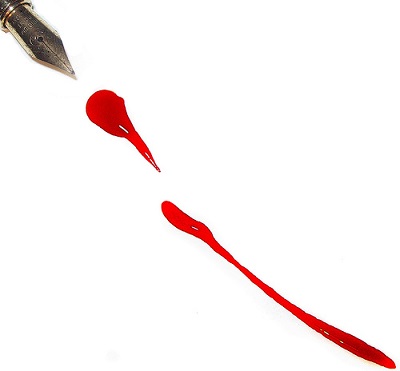FWP:
On the structure of this ghazal as a kind of loosely 'continuous' one, see {233,1}.
I suspect that 'garden-adornment' [chaman-:taraazii] was an established name for some special kind of embroidery, presumably one with a floral motif; but I haven't been able to verify this possibility. The commentators feel that the speaker is preparing to perform this kind of adornment on his garment-hem, using his bloody tears as they drip from the 'pens' of his eyelashes.
The physical image behind this idea is that the grieving lover might be seated in a hunched-over position with his head very much lowered, so that his bloody tears would drip directly down and land on his garment-hem. (Hems and borders of garments were often decorated with special bands of embroidery.) Or perhaps he would be in the do-zaanuu position; for discussion of this, see {32,2}.
Another possible reading would be that the speaker has already completed the 'arrangement'
of this garment-hem decoration, and is now 'again' refilling his eyelash-pen
with his heart's blood, preparing for some new act of creative bloody-tears
rose-floral embroidery.

Nazm:
That is, in order to make an adorned garment-hem, I am dipping the eyelash-pen in the blood of the heart. (264)
== Nazm page 264